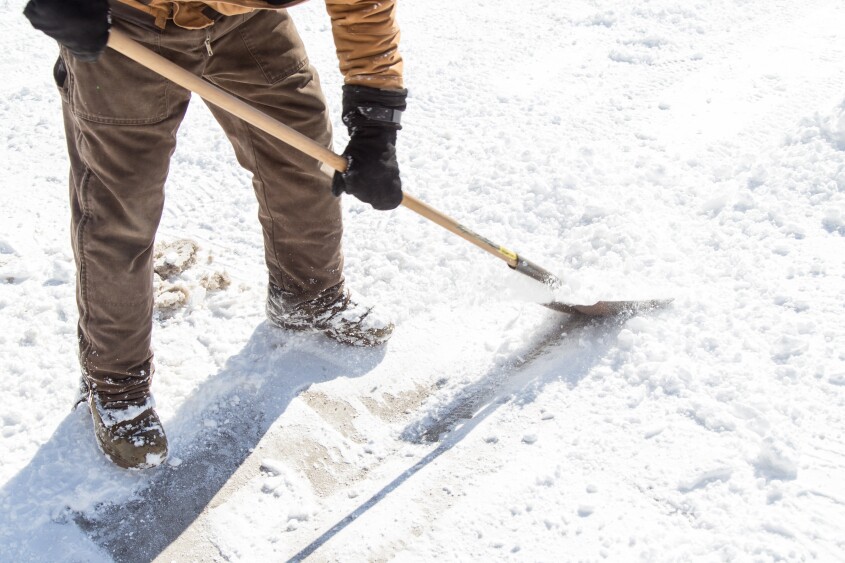What is cold stress?
Cold stress occurs when the body can no longer maintain its normal temperature. This can lead to serious health issues such as hypothermia, frostbite, and trench foot. Cold stress isn’t limited to outdoor work — it can happen indoors or in transit, especially in refrigerated environments or poorly insulated spaces.
Industries at risk of cold stress
Cold stress can affect a wide range of businesses, including:
- Food processing and cold storage facilities
- Warehousing and logistics operations
- Transportation and delivery services
- Construction and manufacturing
- Utilities and energy sectors
- Agriculture and greenhouse operations
Whether employees are working in walk-in freezers, loading docks, or making deliveries in frigid conditions, the risk is real and preventable.
Understand cold stress exposures
Immersion/trench foot
Immersion foot, also known as trench foot, is an injury to the foot caused by prolonged exposure to wet and cold conditions. It does not require freezing temperatures to cause damage. Symptoms include red skin, numbness or tingling, pain in legs or feet, swelling, and blisters. Treatment of trench foot requires medical attention. Remove your wet boots and socks, dry your feet (avoid working the skin), and keep weight off your feet until evaluated by a medical professional.
Frostbite
Frostbite occurs when the skin and tissue of an area freeze. It can result in permanent damage to the body, and in severe cases, result in amputation. Signs of frostbite are reddened skin with gray or white patches, tingling or aching, loss of feeling, and blistering. The affected site is generally found on fingers, toes, the nose, or ear lobes. These areas will feel firmer to the touch than usual. Medical attention is necessary and should be received as quickly as possible. Protect the area from contact by wrapping loosely in a dry cloth. Do not rub or try to re-warm the area, this should only be done by medical professionals.
Hypothermia
Hypothermia is an abnormally low body temperature caused by prolonged exposure to cold temperatures. When this occurs, the body has lost heat quicker than it could restore, eventually resulting in using up its energy stores. Although it is generally caused by excessive cold weather, this can also occur in cooler temperatures (above 40°F) if the person has been immersed in cold water or has become wet from rain or excessive sweat.
A mild symptom is uncontrollable shivering and should not be ignored. Further symptoms include loss of coordination, slurred speech, confusion, slow heart rate or breath, and unconsciousness. If not treated, hypothermia will result in death. Hypothermia is especially dangerous because of the effects on the brain. The extremely low body temperature will result in a person’s inability to think clearly, and they may be unable to get help.
This is a medical emergency that needs an immediate response. Call 911 and move the employee to a warm, dry area if possible. Carefully remove wet clothing and wrap the person in dry clothes or blankets, cover the whole body, including the neck and top of the head, but do not cover their face. Place hot packs or bottles with warm water in the armpits, along the side of the body and in the groin.
Best practices help protect employees from cold stress
Provide appropriate PPE
Equip workers with insulated gloves, boots, and outerwear designed for cold environments. Moisture-wicking base layers and wind-resistant outer layers are essential.
Schedule smart
Adjust work schedules to limit exposure during the coldest parts of the day. Encourage frequent breaks in warm areas and rotate tasks to reduce prolonged exposure.
Create warm zones
Designate heated break areas where employees can warm up. Portable heaters, heated trailers, or indoor rest areas can make a big difference.
Monitor conditions
Use thermometers and weather tracking tools to monitor ambient temperatures. Implement a cold stress protocol when temperatures drop below safe thresholds.
Encourage hydration and nutrition
Cold weather can suppress thirst, but staying hydrated is crucial. Provide warm beverages and high-energy snacks to help maintain body heat.
Inspect equipment and workspaces
Ensure that vehicles, machinery, and workspaces are winter-ready. Prevent ice buildup and maintain proper insulation in cold storage areas.
Educate and train
Ensure employees understand the signs of cold stress and how to respond. Training should cover:
- Symptoms of hypothermia and frostbite
- Proper clothing and layering techniques
- Emergency procedures
Provide additional safety training to your employees with the preventing cold stress on the jobsite safety talk.



